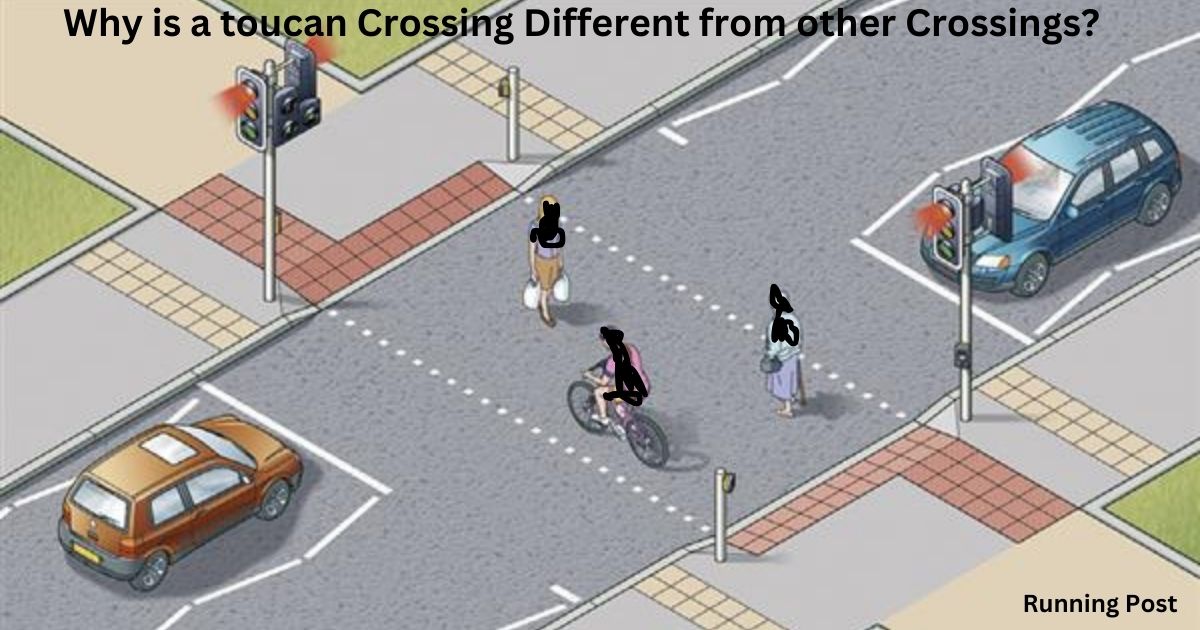| A: Moped riders can use it | B: It’s controlled by a traffic warden | C: Cyclists can use it | D: Toucan crossings are designed to have no traffic lights at all |
Why is a toucan crossing different from other crossings! When it comes to pedestrian crossings, a toucan crossing stands out due to its unique design and functionality. This type of crossing not only caters to pedestrians but also allows cyclists to cross alongside them, which sets it apart from other types of crossings. The toucan crossing is specifically designed to enhance the safety and convenience of both cyclists and pedestrians, making it an integrated solution for mixed-use traffic areas.
What is Special About a Toucan Crossing?
Design and Functionality
The toucan crossing is a modern traffic management solution that combines pedestrian and cyclist traffic into one system. Unlike traditional pedestrian crossings, a toucan crossing is designed to accommodate both groups safely. It features a traffic light system with signals for both pedestrians and cyclists, which helps regulate the flow of both types of traffic simultaneously. The design typically includes a wider crossing area to ensure ample space for both cyclists and pedestrians, reducing the risk of accidents and congestion.
Overview of the Toucan Crossing
At its core, a toucan crossing is similar to a pedestrian crossing but with added features to cater to cyclists. It often includes a signal that stops traffic to allow safe passage for both pedestrians and cyclists. This type of crossing is usually located at intersections or busy roads where cyclists and pedestrians frequently cross. Its implementation aims to improve the overall safety and efficiency of road usage by integrating different forms of transport into one system.
Unique Features of the Toucan Crossing
What makes the toucan crossing unique is its ability to handle mixed traffic. Key features include:
- Dual Signals: Separate signals for pedestrians and cyclists.
- Wide Crossing Area: Provides enough space for both groups to cross simultaneously.
- Advanced Timing Systems: Optimizes crossing times to minimize wait and crossing times.
Cyclists and Pedestrians

Why Cyclists Can Use Toucan Crossings
Cyclists are allowed to use toucan crossings due to the design that accommodates both bikes and pedestrians. The inclusion of specific traffic signals and a wider crossing area helps to manage the flow of cyclists alongside pedestrians safely. This is different from other crossings where cyclists might be required to dismount or use separate bike lanes, which can be inconvenient.
Advantages for Cyclists and Pedestrians
Toucan crossings offer several benefits for cyclists and pedestrians:
- Safety: Reduces the risk of accidents by providing a dedicated space for both groups.
- Convenience: Eliminates the need for cyclists to dismount and allows for smoother transitions.
- Efficiency: Streamlines the crossing process, reducing delays and improving overall traffic flow.
What is the Toucan Crossing Rule?
Traffic Signal Operation
Toucan crossings operate with a specific traffic signal system that is designed to handle both pedestrian and cyclist traffic. The signals are synchronized to ensure that both groups can cross safely. When the light is red, all traffic is stopped, and when it turns green, pedestrians and cyclists can cross simultaneously. This dual-purpose signal system helps in managing the flow of different types of traffic efficiently.
How the Signals Work
The signals at a toucan crossing are equipped with different lights for pedestrians and cyclists. Typically, the signals include:
- Pedestrian Signals: Indicate when it is safe for pedestrians to cross.
- Cyclist Signals: Show when cyclists can cross safely. The signals are programmed to work together to prevent accidents and ensure smooth crossing.
Timing and Usage Rules
The timing of the signals is crucial in ensuring safety and efficiency. The green light duration is set to allow both pedestrians and cyclists to cross comfortably. The red light ensures that all traffic is halted, providing a clear and safe crossing area. Usage rules are clearly indicated on the signals and may include instructions for both cyclists and pedestrians to follow.
Crossing Instructions for Cyclists and Pedestrians

Instructions for Pedestrians
Pedestrians should follow the pedestrian signals and use the designated crossing area. They need to be aware of cyclists and make sure to cross when it is safe to do so. The toucan crossing provides ample space, but pedestrian vigilance is still crucial for safety.
Instructions for Cyclists
Cyclists should follow the cyclist signals and be mindful of pedestrians. They are expected to slow down and yield to pedestrians if necessary. The wider crossing area of the toucan crossing helps to accommodate both groups, but cyclists should still exercise caution and follow traffic rules.
What’s the Difference Between a Toucan and a Pelican Crossing?
Design Differences
Physical Appearance and Layout
Toucan and pelican crossings have different physical designs. Toucan crossings are specifically designed for both pedestrians and cyclists, featuring wider crossings and dual signals. In contrast, pelican crossings are primarily for pedestrians, with a narrower crossing area and signals designed just for foot traffic.
Traffic Light Configurations
The traffic light configurations also differ. Toucan crossings have separate lights for cyclists and pedestrians, while pelican crossings have signals focused solely on pedestrian traffic. This distinction reflects their intended use and the type of traffic they are designed to manage.
Usage Differences
How Pedestrians and Cyclists Use Each Type
Pedestrians and cyclists use toucan crossings as a shared space, with clear signals for each group. Pelican crossings are used primarily by pedestrians, who have the right of way, and cyclists are expected to use alternative routes or dismount if necessary.
Comparison of Traffic Management
Toucan crossings offer integrated traffic management by accommodating both pedestrians and cyclists in one system. Pelican crossings, on the other hand, focus solely on pedestrian traffic and may require cyclists to find separate or less convenient crossing points.
Why is a Toucan Crossing Different?
Cyclist Accessibility
Key Reasons Cyclists Can Use It
The key reason cyclists can use toucan crossings is the design that accommodates their needs alongside pedestrians. The dual signals and wider crossing areas ensure that cyclists have a safe and convenient way to cross, which is not always available in other types of crossings.
Benefits for Integrated Transportation
Integrated transportation benefits from toucan crossings as they streamline the crossing process for multiple types of road users. This integration helps in reducing delays and improving safety by managing the flow of different traffic types in a cohesive manner.
Broader Implications
Impact on Urban Mobility
Toucan crossings have a positive impact on urban mobility by improving the efficiency of traffic flow and reducing the risk of accidents. They make it easier for cyclists and pedestrians to navigate busy intersections, contributing to a more balanced and efficient transportation system.
Enhancing Safety for All Road Users
By providing a dedicated space for both cyclists and pedestrians, toucan crossings enhance safety for all road users. The clear signaling and wide crossing areas help prevent conflicts between different types of traffic and improve overall road safety.
This structure and content should provide a comprehensive and detailed overview of toucan crossings and their unique features compared to other types of crossings.
You Also Like It:
Dettato Primi Giorni di Scuola Classe Quarta
The correct spelling is school not school. some pe – tymoff
Releated Posts
MAB Instructor Certification: Your Gateway to Professional Crisis Management Leadership
In today’s fast-evolving professional environments—especially in healthcare, mental health, education, and corrections—conflict and aggression can arise without warning.…
Freewayget.com: Your Ultimate Platform for Deals, Discounts, and Digital Products
Introduction to Freewayget.com In today’s fast-paced digital world, finding reliable platforms that offer authentic discounts, deals, and digital…
Affordable & Fast Embroidery Digitizing Services in Your Area
Embroidery digitizing services provide corporations, designers, and people with brilliant embroidery-equipped designs by means of changing art work…
Introduction to hdhub4u nit
In this article, we will delve into the details of hdhub4u nit, exploring its features, benefits, and why…

















